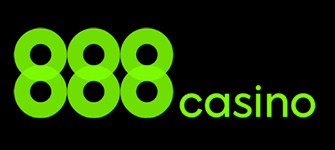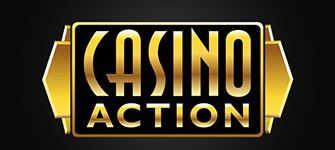Multi Hand Blackjack
It is no secret that conventional blackjack games are becoming less interesting. People are getting used to the old, stagnant rules. Multi-hand blackjack is just like any blackjack game, the only difference being that the player can now play up to 5 hands simultaneously instead of playing one hand at a time.
Each hand is treated separately from the rest but all hands must beat the same set of cards, the dealer’s. Once cards are dealt to all betting spots you have covered with chips, you must complete your first hand before you can proceed to the next one.
You start with the hand dealt to the first base spot to the dealer’s far left. Once finished with that, you continue with the hands dealt to other betting boxes all the way to the third base position, i.e the seat located immediately to the dealer’s right side.
As far as the actual rules are concerned, playing multiple spots is no different than playing a single hand at a time. In other words, you can expect variations in the splitting, doubling, and the dealer’s standing rules across different blackjack tables, landbased or online.
Speaking of online play, all major software developers have added games in this format to their blackjack portfolios. Betting on multiple spots at a time is possible in notable titles like Microgaming’s Atlantic City Blackjack Gold, Felt’s Suit ‘Em Up Blackjack, Playtech’s Blackjack Surrender, Pragmatic Play’s American Blackjack, and NetEnt’s Blackjack.
- ✓ Rules
- ✓ Player Moves
- ✓ Playing Multiple Hands
- ✓ Choosing a Multi-Hand Variation
- ✓ Are There Any Advantages
- ✓ Software Developers
Multiple bets within the same round are also accepted in many live dealer blackjack games provided there are enough vacant seats at the respective table. With that said, not all players are cut for multiple-hand blackjack. There are several things one needs to consider before they spread their action to several betting spots, including bankroll management, playing conditions, and the effect multi-hand play has on variance.
Rules in Multi-Hand Blackjack
Multi-hand varieties of 21 generally follow the standard set of rules in blackjack although the exact playing conditions vary vastly between tables. To start with, most online varieties that use the multi-hand format are dealt out of a shoe which contains multiple 52-card decks, usually between four and eight.
With that said, there are single-deck variants that support this feature. One prime example is Play’n GO’s Single Deck Blackjack where you can spread your action to a maximum of three betting positions. Short-deck (i.e. 48-card decks with the 10s removed from play) variants like Microgaming’s Spanish Blackjack allow you to make up to five bets during a single round.
But let’s get back on topic. Multi-hand blackjack uses the traditional ranking of cards where aces can be either 1 or 11 (depending on players’ preferences), faces (King, Queen, Jack) are regarded as 10s, and all other cards (2 through 10) are valued based on pip number.
The object of the game is to beat the dealer by getting as close to 21 as possible without going over. Players can win when they outdraw the dealer, when they have a blackjack against any other dealer hand, or when the dealer busts but the player does not.
Multi-hand games usually follow two distinct styles of card dealing but the American style is more widespread. This is where the dealer draws their first card face-up while the second one, the hole card, is dealt face-down.
Regardless of the number of spots you bet on, your cards are always dealt face-up in multi-deck games. Some multi-hand varieties adopt the European style where no hole cards are in play.
Rather, the dealer draws one exposed card during the initial deal, waits for the players to make their decisions, and completes their hand at the very end of the round. The rules for the dealer are always fixed regardless of whether you are playing one or several hands at the time. The dealer must either stand on all 17s or hit soft 17.
Player Moves in Multi-Hand Blackjack
The moves players can make in multi-hand variants of 21 coincide with those in single-hand games. Players are presented with a choice from the following playing decisions – hit, stand, split, double down, surrender, and buy insurance.
–Hit – Draw an additional card/cards until you’ve reached 21 (blackjack), or come the closest without going over.
–Stand – If you are already near the desired 21 zone, hitting additional cards might be a bad idea (remember, once you go over the 21 mark, you bust/lose, even if the dealer goes over 21 as well). Standing refers to not wanting any additional cards.
–Split – If you have a pair, you can split the two cards into two separate hands. You must cover the second hand with another bet, equal to your original wager. Let’s say you have two Jacks (J,J) and wish to split. The dealer will move one Jack to the side and deal an additional card to both split Jacks.
For example, one Jack is dealt an Ace (J,A) and the other is dealt a 6 (J,6). Now each hand is treated independently and you can hit, stand, split, and double on it. You will have 21 in one hand (10+11=21) and hard 16 in the other (10+6=16). Split aces normally cannot be drawn to.
Each ace automatically receives no more than one card. If you draw a ten-value card next to a split ace, the hand pays even money as a regular 21 and is not considered a blackjack, paid at odds of 3 to 2. In some variations of the game, you can split again, usually up to 4 hands in total.
–Double – Double – You can also double your bet by posting an additional wager equal to the amount you initially wagered. Doubling down for less than your original bet is sometimes possible although we advise against it. The dealer will only give you one extra card in return.
If you win, you double your winnings. If you lose, you lose twice as much. Because of this, doubling is strategically recommended only on specific two-hand totals against certain dealer upcards. Usually, you can double after a split but that depends solely on the casino and variation of blackjack in question.
–Surrender – Sometimes you can choose to forfeit a hand with poor odds of winning in order to receive half your bet back. This move is possible in some multi-hand variations of the game. Early surrender is hard to come by but late surrender allows you to fold a hand after the dealer checks their hole card for a blackjack. You get half of your initial bet back, the dealer collects the rest. This is the more common of the two surrender rules.
–Insurance – If the dealer has an ace showing, they would offer you insurance in case their other card is a 10. If you accept, you have to commit with an additional wager equal to half the original one. Provided that the dealer indeed has a blackjack, you get paid 2 to 1 but you will lose your initial wager unless you also have a blackjack. Strategically speaking, insurance is always a bad bet.
Playing Multiple Hands in Blackjack
Most online multi-hand variations of 21 give you the opportunity to play on up to 5 betting spots within a single round. However, there are some where players are limited to no more than 3 betting spots at a time.
Regardless of the exact number, you play all your hands against the same dealer hand. If the dealer busts, all your unbusted hands win. The opposite is also true. Provided that the dealer flips over a blackjack, all your hands are immediate losers except for blackjacks.
The Deal in Multi-Hand Blackjack
A round of play in multi-hand blackjack starts with the player posting chips in one to five betting boxes on the table layout. Once all wagers are made, the initial deal commences. The dealer draws a card face-up to each betting spot starting from his leftmost side (this is the players’ right side) and finishes by dealing themselves one card, also face up.
This process is then repeated a second time, again from the leftmost side of the table, with all betting spots receiving a second face-up card. An exception is made only for the dealer’s second card which is dealt face-down, provided that hole cards are in play.
Assuming the dealer’s exposed card is an ace, they will ask you to accept or decline insurance one hand at a time. After the initial deal is over, you decide how to play your multiple hands, starting from the first betting spot immediately to the dealer’s left side.
This is known as the first base. You continue this way playing one hand at a time until you eventually complete your last hand in third base, i.e. the last betting box to the dealer’s right (your left in this case).
Once you have played all your hands, the dealer exposes their hole card and completes their own hand, if necessary, drawing to 16 and standing (or hitting) on soft 17. The wagers are settled one at a time, starting with the leftmost betting spot. On a side note, if you bust a hand mid-round, the dealer would immediately collect the chips from the losing betting spot.
Choosing a Good Multi-Hand Blackjack Variation
Playing multiple hands within the same round is a volatile venture. Spreading your action to multiple betting spots causes the house edge to grind down on your blackjack bankroll faster.
You end up playing more hands per hour this way, which in effect results in higher overall losses in the long term. Also, we would like to remind you that basic strategy alone cannot overcome the house edge, so you are still playing a losing game when using it, regardless of hand number.
Due to this, it is of utmost importance to choose a multi-hand blackjack variant with liberal enough rules that decrease the house edge to a tolerable level. What we have in mind by “tolerable” is 0.50% or less. Below are some of the favorable rules to watch out for when picking a multi-hand blackjack game.
- Six decks with a dealer standing on all 17s
- Blackjack payouts of 3 to 2
- Double down is possible on any two-card hand
- You can double after splitting
- Hole cards are in play in line with the US dealing style
- No drawing to split aces
- The dealer checks for blackjacks under tens and aces
- You can resplit up to four hands or more
- Late surrender against an ace is possible
- 7-Card Charlie hands are automatic winners regardless of the dealer’s hand total unless they have a blackjack
One of the online variations that come the closest to the above-specified playing conditions is Blackjack Surrender by Playtech. The game allows for multiple hands on up to five betting spots at a time. It is available for both mobile and desktop play and yields a house edge of 0.34%.
Is There Any Benefit to Playing Multiple Hands in Blackjack?
We briefly touched upon this subject earlier but it is worth repeating again. Playing multiple hands constantly when armed with basic strategy only is a bad idea overall. You risk ending up depleting your bankroll within a few rounds, especially when you play with a limited budget.
Then again, you are still playing a negative-expectation game with basic strategy, regardless of the number of bets you make per round. If you still insist on betting on multiple hands simultaneously, you should consider sizing your wagers according to your session bankroll.
It is more than obvious that you should bet proportionately to your budget. It is nonsensical to join a multi-hand blackjack table with a bankroll of $100 or $200 and spread to five betting spots with a $10 wager on each hand. You stand very good chances of being wiped up in less than a minute, we kid you not. All it takes is for the dealer to flip over two blackjacks in a row and you are pretty much done.
Spreading to multiple spots is justifiable only on condition you have mastered card counting. This would enable you to identify when the shoe’s composition has changed in your favor, improving your odds of winning with multiple hands. Also worth noting is that spreading to several betting spots when the count is positive can actually lead to a reduction in variance. Here is an example of what we mean.
Reducing Variance by Spreading Your Action
Suppose you use a bet spread that requires you to size your wagers from $60 to $600 in a multiple-deck game. The shoe goes positive and you spread your action to three hands, of $200 each. Assuming the dealer forms a strong hand like 19 or 20, for example, you stand better chances of pushing or outdrawing them with at least one of your three hands.
Meanwhile, if you play on a single betting spot at a time with a $600 wager, you probably would have lost in one such scenario. The bottom line is the purpose of spreading to multiple hands is not to increase your expected value but to reduce variance.
Software Developers That Offer Multi-Hand Blackjack Games
Multi-hand blackjack is available in countless variations, with nearly all major software suppliers releasing games that support this feature. The rules of play and the number of hands you can play at a time differ between variations. The most common scenario is to have either three or five betting spots on the virtual layout.
Below we cover suppliers that have provided RNG-based multi-hand blackjack games. However, spreading to several spots is also possible when you play against live dealers but only on condition there are enough vacant seats at your chosen table.
- Microgaming easily beats the competition in terms of multi-hand blackjack selection. The developer boasts the richest collection of blackjack games in the industry. It has produced numerous multi-hand blackjack variants over the years including the likes of Premier Blackjack MultiHand Gold, European Multihand Blackjack, Multihand Pontoon, Vegas Downtown Multihand, Perfect Pairs Multihand, and Multihand Double Exposure.
- Playtech is among the few suppliers that can compete with Microgaming in terms of productivity. The software provider has one of the broadest gaming portfolios out there, not to mention its creations impress with superb audio and graphics quality. Some of Playtech’s releases that support the multi-hand format include Blackjack Surrender, 21 Duel Blackjack, Perfect Blackjack, and Free Chip Blackjack. All of these support up to five hands within a single round.
- Pragmatic Play is mostly known for its rich portfolio of video slots. However, the studio has several table games on its roster, including the likes of American Blackjack and Multihand Blackjack, both of which enable you to play up to three hands per round.
- iSoftBet is not as popular among fans of table games because the company concentrates its efforts mostly into the development and distribution of online slots, similarly to Pragmatic Play. Nevertheless, iSoftBet boasts several well-designed multi-hand releases including the eponymous Multihand Blackjack where you can play a maximum of three hands at a time.
- Play’n GO is an award-winning supplier of online casino software with a broad product range. The company supplies video slots, video bingo, and table games like roulette, casino-banked poker, baccarat, and blackjack. Its versions of Double Exposure, European Blackjack, and Single-Deck Blackjack are all available in the multi-hand format, allowing you to play up to three hands simultaneously.
- NetEnt ranks as one of the most respected and accredited software suppliers in the online gambling industry and rightfully so. The company dominates some of the world’s largest markets and has consolidated a strong presence in the United Kingdom, Sweden, Malta, Gibraltar, and the United States. Its RNG-based games are certified for fairness by eCOGRA. We suggest you try the company’s 6-deck Blackjack where you can play on a maximum of three bet spots.


 PlayOJO Casino
PlayOJO Casino 888casino
888casino All British Casino
All British Casino Casino Action
Casino Action UK Casino Club
UK Casino Club